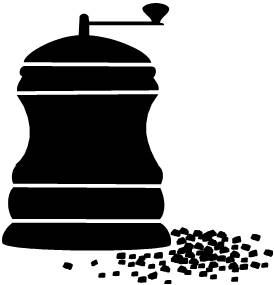 It’s amazing where inspiration can strike for blog posts.
It’s amazing where inspiration can strike for blog posts.
This one came about after a visit to the opticians. I dread going mainly because I have a tendency to faint but on this occasion not only did I not faint, I also came away with a blog post.
Whilst sitting in the big black chair, breathing deeply and praying that I wouldn’t pass out, my optician was making conversation and asked what I did.
After explaining I was a freelance copywriter and worked with computers most of the day (hence the need for an eye check) he told me about a proofreading blunder he’d read about.
Earlier this year a story appeared in the Daily Mail with the headline:
Pasta Cookbook pulped over ‘freshly ground black people’ misprint
In a nutshell, an Australian publisher published a cookbook with a blaring mistake – namely a recipe using ‘freshly ground black people’ rather than ‘freshly ground black pepper’.
Ooops.
In fact it turned out to be a very expensive ooops because 7,000 books had to be reprinted costing Penguin a massive 20,000 Australian Dollars.
To add insult to injury, Penguin Australia’s head of publishing, Bob Sessions, said during an interview:
“We’re mortified that this has become an issue of any kind and why anyone would be offended, we don’t know. We’ve said to bookstores that if anyone is small-minded enough to complain about this … silly mistake, we will happily replace (the book) for them.’
Well Bob, I would suggest at 20,000 Australian Dollars it was rather a huge mistake.
How to proofread effectively
Let’s get one thing clear – proofreaders are human and humans do make mistakes. No one is perfect but there are a few things you can do to make sure your writing is as perfect as possible so you can avoid embarrassing episodes like this one.
1. A second pair of eyes
In an ideal world if you wrote an article you would get someone else to proof it for you. A fresh set of eyes will pick up on errors you don’t see.
2. Time
If you don’t have the luxury of a proofreader the next best thing is to give yourself time between completing the piece of work and proofreading it. If possible leave it for a minimum 24 – 48 hours before returning to it.
3. Quiet
Make sure you have peace and quiet when proofing. If you work in a large office you will easily become distracted and miss things. Find a quiet room where you can shut yourself away.
4. Print out
It is much easier to read from a piece of paper than a screen. Print out the document you need to check and go through it slowly line by line.
5. Go backwards
Once you’ve checked through your document a couple of times, read it backwards. Trust me, reading it backwards will make you more aware of the words you’ve used and will flag up any that are spelt incorrectly or are just plain wrong.
6. Read out loud
Proofreading isn’t just about spelling and grammar. It’s also about making sure the piece flows and has rhythm. Reading it out loud will flag up any areas that don’t flow and will show if you’ve overused words or terms.
7. Don’t rush it
Your reputation relies on the quality of your work so don’t rush it. The article, blog post, web copy or brochure that you’ve written has to be perfect to keep your customers happy.
Proofreading has to be one of the dullest jobs there is but it is also one of the most important. If you don’t want to make headlines like this one, make sure you take your time and proofread every piece of work within an inch of its life.
How do you proofread?
Do you have any unusual techniques that you find really work?
If so leave a comment below, I’d love to hear about them.






2 comments ↓
Okay, I’ll admit I sometimes drop the ball when it comes to proofreading my own material… but wow, ground black people!
That’s a pretty harsh proofreading mistake.
Great post Sally!
Danielle
Hi Danielle,
Yes, we are all human and mistakes do happen, but ground black people is a pretty major one!
Sally
Leave a Comment